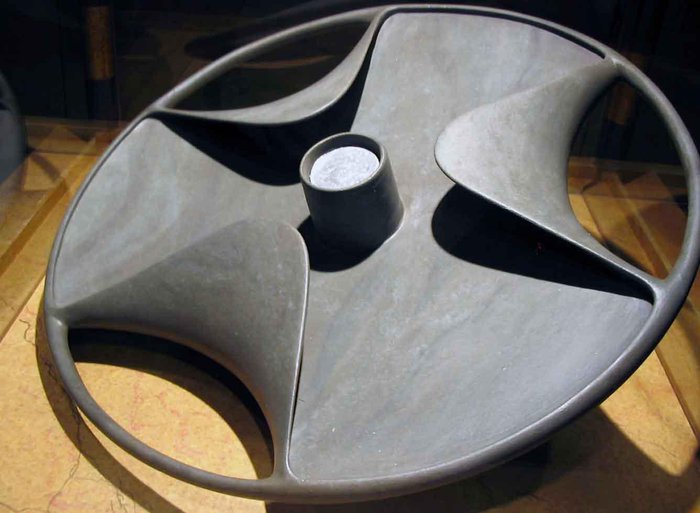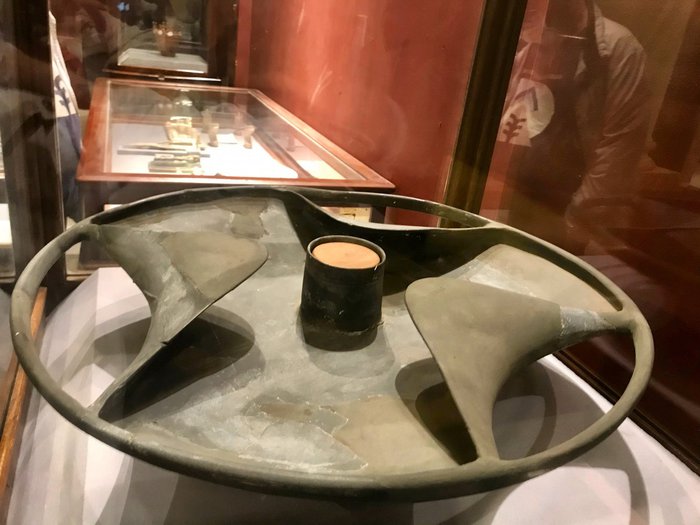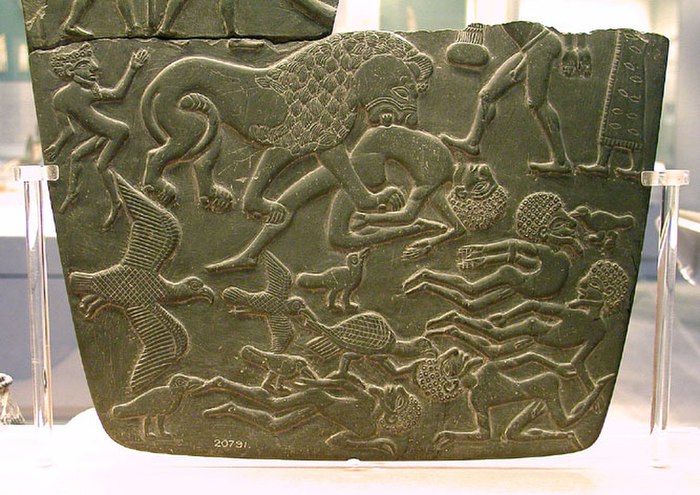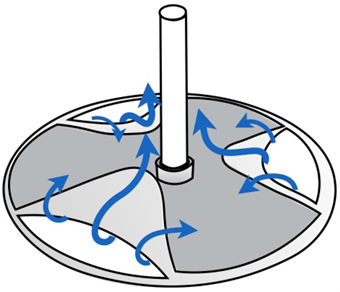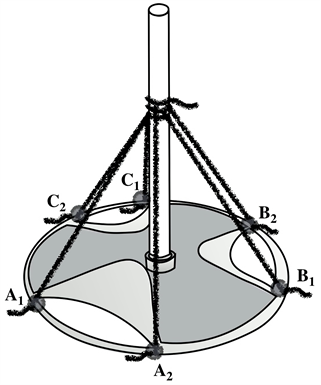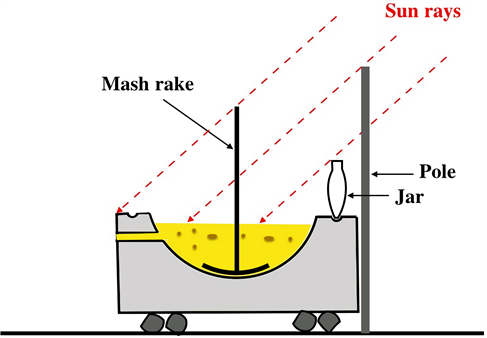Mysterious 5,000-year-old ‘disk’ found in Egypt confuses scientists
This mysterious three-lobed “plate” is currently on display at the Egyptian Museum in Cairo, it is made of stone and is at least 5,000 years old.
This mysterious disk is often referred to as the “Egyptian Trilobite” or “Sabu Disk”. This is a mysterious ancient Egyptian artifact found in the tomb of Prince Sabu, a governor of the First Dynasty and the son of Pharaoh Anedjib.
The Sabu disc consists of three central converging curved lobes, unlike any other artifact found in Egypt to date. Discovered at Sakkara Cemetery, Egypt’s largest group of tombs built in antiquity.
The mausoleum of Prince Sabu is estimated to date back to around 3,000 BC during the early dynasties of Ancient Egypt. This makes the disc at least 5,000 years old!
Archaeologists suggest that the tools used at the time were made of stone and copper, so it is unlikely that the Sabu disk had a high degree of precision and was made from a fragile material such as slate. And this is just one of the reasons why the Sabu disk has attracted the interest of scientists and others.
Many theories have been proposed over the years about the function of this object. Initially, the plate was considered as a vase, incense burner or simply a decoration. However, this has caused a lot of controversy in the archaeological and historical communities.
Discovered by the famous archaeologist Walter B. Emery on January 10, 1936, this mysterious disk is round and has a diameter of about 610 mm, about 106 mm high.
It is crafted from “Schist” stone, a term used by archaeologists in the past to refer to metasiltstone. This is a metamorphic siltstone that is less prone to cracking during carving than bedrock.
However, it has a very high level of finishing, so the making of this plate must have come from a skilled craftsman. Throughout Egyptian history, there are numerous examples of vessels and other objects with intricate hieroglyphic carvings made from Schist momentum, which suggests that this was probably a common material in Egypt. past.
In addition to those mentioned above, more common “mainstream” theories include: It was a mixer for mixing grain, with meat and water, perhaps fruit. Or maybe this is a component of an ancient water pump.
As Adam Henessy has pointed out, it is difficult to prove or disprove this, although using it as a water pump or mixing tool for long periods of time can be challenging due to its easy nature. fracture of the rock.
However, there are certainly some striking similarities between Sabu discs and modern pump impellers, as shown in the image below.
Accordingly, an amateur historian created a copy of the Sabu disc from a 3D printer to prove his own theory. Accordingly, the Sabuy disc could be an ancient “impeller”, a part of a centrifugal pump.
When placed in the housing and pushed at high speed through its central shaft, the saucer really proves to be highly efficient in pumping water. In addition, when rotating without a housing to conduct water, the disc will create a strong eddy current.
These experiments may suggest that the disc’s nicely folded lobes and slightly concave shape certainly serve a purpose.
But whether they are really related to water, no one can clearly explain. Some believe those odd shapes are part of something completely different – like more advanced technologies.
But the depiction of the Sabu disc recorded in Egypt only appears in a relief from 1500 BC, around the time of the Hyksos invasion in 1640 BC.
In the timeline of history, this is also around the same time that humans started using the wheel, which makes the Sabu disc a potentially revolutionary discovery. However, the brittle shale material used for the disc cannot withstand the force of a wheel. So it’s definitely not a wheel.
According to a recent study, with more solid scientific evidence. Archaeologist Akio Kato, who has done extensive research on the history and archeology of ancient Egypt, suggests that the Sabu dish could have been used in brewing. It is a grinding rake to mix and evenly mix grains, hot water in a mixture.
Kato points out two observations that support this idea. First, Prince Sabu’s burial chamber contains objects including stone or ceramic vases, flint or bronze tools, ivory boxes, bones of two oxen and arrows – almost all of which are related to Prince Sabu’s “food” for the afterlife.
It is therefore natural to suggest that the Sabu dish was the tool for brewing beer, which was considered “food” for the ancient Egyptians, as important as bread and also as a source of food. essential supplies for the afterlife.
Second, the gray color of the disc does a pretty good job of distinguishing it from the brown shell. Discs were created in the early Bronze Age and the metal used in those days was bronze or brass. If it is made of copper or brass it will be brown so it is difficult to check the quality.
The study also explains how effective the three lobes on the plate are, it allows smooth mixing of grains with hot water without creating any swirls or bubbles, ensuring a uniform grinding with a uniform distribution. uniform temperature.
Another fact that seems to support Kato’s position is that the Sabu saucer can move up and down gently when placed in water. Just applying a small force can create a flow of water, then the flow itself will help the disc move.
The Sabu dish, which may have been used in large kegs of beer, is part of the world’s oldest known mass brewery found at the Royal burial site of Abydos, dating back to around 3,000. B.C.
Related Post
A shocking documentary proves that mermaids do exist
SHOCKING Revelation: Thuya, Mother of Queen Tiye, Was the Grandmother of Akhenaten and Tutankhamun—What Ancient Egyptian Secrets Did She Leave Behind?
Breaking News: Astonishing Discoveries at Karahan Tepe Confirm an Extraterrestrial Civilization is Hiding on Earth, and NO ONE Knows!
Breaking News: Researchers FINALLY Discover U.S. Navy Flight 19 After 75 Years Lost in the Bermuda Triangle!
NASA’s Secret Investigation: Uncovering the Astonishing Mystery of the UFO Crash on the Mountain!
Explosive UFO Docs LEAKED: Startling Proof That Aliens Ruled Ancient Egypt!
